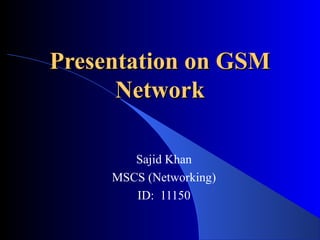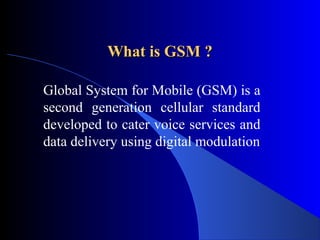The document provides information on Global System for Mobile (GSM) network. It discusses that GSM is a second generation cellular standard developed to provide voice and data services using digital modulation. It details the history and development of GSM standards. The document describes the various GSM services including teleservices, bearer services, and supplementary services. It explains the GSM system architecture including components like mobile station, base station subsystem, network switching subsystem and their functions. It also covers GSM specifications, call routing process, advantages of GSM over analog systems, and the future of GSM network.



























